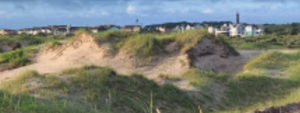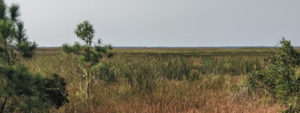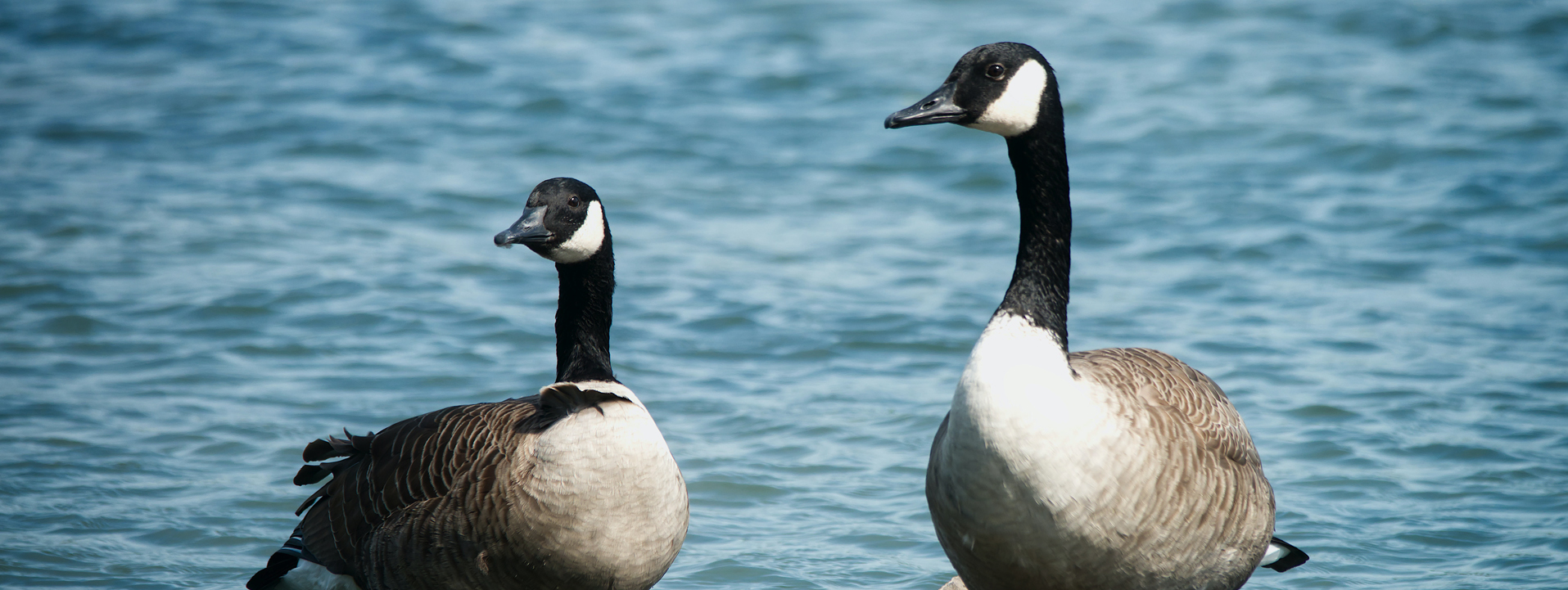Outer Banks Birdwatching, or birding as it is sometimes called, is a popular activity in the Outer Banks of North Carolina. From the Currituck Banks Wildlife Refuge to Nags Head Woods Ecological Preserve and even Wright Brothers Memorial, there are plenty of places for avid birdwatchers to explore in this beautiful part of the country. Every year, hundreds flock to attend the Wings Over Water Wildlife Festival which celebrates birds and other wildlife that can be found on these barrier islands. With so many species present here – from American Avocets to Black Skimmers – there’s something for every avid birdwatcher to see!
Where are the Best Places to Birdwatch in the Outer Banks?
Currituck Banks Wildlife Refuge

The Currituck Banks Wildlife Refuge is a great place to go birdwatching in the Outer Banks. You can see lots of different kinds of birds such as American Avocets, Black-Bellied Plovers, and Canada Geese. It’s also a lot of fun!
Nags Head Woods Ecological Preserve

The Nags Head Woods Ecological Preserve is an incredible wildlife habitat that was designated in 1974. It attracts birdwatchers from all around due to the undisturbed wildlife, ponds, marshes, wetlands and over 100 different species. Here you will see birds like the clapper rail, red-shouldered hawk, and the beautiful ruby-throated hummingbird!
Wright Brothers Memorial (History and Birding)

Wright Brothers Memorial is one of the best places to visit in the Outer Banks for history and birdwatching. It was established to commemorate Wilbur and Orville Wright, who were the first people to successfully achieve sustained flight in a powered airplane. The memorial itself stands atop a hill overlooking the Kill Devil Hills, and it’s become a popular spot for birdwatchers over the years. Here, visitors can expect to see birds like American Kestrels and Great Blue Herons… Get your history lesson and bird fix all in one single place.
For the Die-Hard Birdwatchers: Wings Over Water Wildlife Festival

October 17 – 22, 2023 and WOW Encore December 8-10, 2023
The Wings Over Water Wildlife Festival is an annual event that celebrates the birds and wildlife of the Outer Banks. During this festival, bird enthusiasts from all around come to visit, learn about the species found in these barrier islands, and partake in activities like kayak tours, family programs, and photography workshops.
The highlight of the festival is the birding trips, where you can join a guided tour and get an up-close look at some of the species found in the Outer Banks. There are also workshops and seminars that provide insight into various topics like conservation and research.
The Wings Over Water Wildlife Festival is a great opportunity to experience the beauty of nature in this part of the country, and an ideal way to get a better understanding of avian life in the Outer Banks.
Species of Birds Found in Outer Banks
American Avocets: The American Avocet is a truly remarkable bird – standing tall with its long legs, long neck and round head, not to mention the iconic super long beak. It boasts a 28 inch wingspan, brown neck and black wings, making them easily recognizable in shallow waters. The unmistakable appearance of an American Avocet makes it impossible to miss when they’re curled up on the water’s surface – a sight that any bird enthusiast looks forward to seeing!
American Black Ducks: The American Black Duck is a sight to behold. It’s male counterparts have especially vibrant plumage, such as their yellow beaks, brown body feathers and gray heads along with a subtle flash of purple in their secondary feathers It’s no surprise these birds have been known to impress when they take flight. The black duck may be fairly large reaching up to 25 oz in weight and spreading its wingspan an impressive 34 inches. You’ll likely find many of these beauties within wetland areas or saltmarshes.
American Kestrels: The American Kestrel is a small, agile falcon that won’t be overlooked. This bold hunter is known for its attitude and quick hunting skills. Male soarers in the sky have an astonishingly vibrant color of blue wings mixed with black stripes on their head – like sideburns! On the other hand, female birds may be slightly understated, with brown feathers and a grey crown – still just as impressive. With an average weight of 3 ounces, you don’t want to underestimate this bird; they are true skilled hunters of the sky!
American Oystercatchers: The American Oystercatcher is a truly remarkable shorebird. With its bright red beak and yellow-red eyes, it’s easy to spot in the marsh! Not only does it stand out, but this bird is incredibly strong; it can open mollusks with its beak – quite an impressive feat. You’re most likely to come across one on salt-marsh or barrier beaches, as they are their favorite spots.
American Wigeons: The American Wigeon is an incredibly eye-catching duck, often identified by its white bill and a dazzling streak of vibrant green feathers across its face. This bird is considered to be quite small in size, weighing about 20 to 50 ounces, with a wingspan at 33 inches. When it comes to finding their habitat, these ducks are drawn towards wetlands and marshes spread across Outer Banks for their ideal living conditions. Whatever the season may be, the American Wigeon manages to add some colour in both our literal and figurative horizon.
Black-Bellied Plovers: The Black-Bellied Plover is a smaller bird that is easily recognized due to its unique coloring. They have a wide neck and a short bill, with their feathers varied in shades of brown, black, and white. These patterns only become more distinct when the plovers spread their wings – spots of black, white, and goldenish brown often adorning the wingtips. Primarily found around coastlines or mud flats near ponds, these birds are common sights along the Outer Banks.
Black-Necked Stilts: Black-Necked Stilts are striking birds to see. These birds have long, lanky pink legs, a white body, and black wings and back that make them stand out against the vastness of their natural habitats. The sharp pointy beaks these stilts possess make them easily identifiable when flying among the clear skies of Outer Banks’ salt pans or salt marshes. Even if you don’t consider yourself to be an avid birdwatcher, Black-Necked Stilts will definitely catch your eye with their unique coloring and appearance.
Black Skimmers: Black Skimmers are easily recognized amongst other birds due to their distinctively uneven bill. They tend to have a brown back and white underbelly, making them unique and quite beautiful. They are exceptional fishers, renowned for their bold tactics in chasing down prey. Not only do they possess the ability to make precise dives keeping within inches of the water–they also move quickly and navigate with skillful accuracy. Black Skimmers can be loads of fun to observe as they skitter across the Outer Banks shorelines with lightning speed!
Canada Geese: Canada Geese, affectionately called ‘honkers’ due to the sound of their rather loud voices, are a frequent sight in the Outer Banks. These large birds have glossy brown bodies with a black neck that typically gleams in the sunlight. Its webbed feet prove invaluable when searching for food in close proximity to water–ideally lush marshes forage for this species. Often seen sharing space with other pond dwellers such as herons and other geese.
Canvasbacks: The Canvasback is a large duck species with very recognizable features including red eyes, sloping foreheads and often males have black chests and white bodies. They are commonly found in water marshes and ponds located along the Outer Banks region. It’ll require patience but if you happen to encounter these beautiful birds then you’ll likely find it worth your while.
Common Loons: Common Loons are beautiful birds, with their sleek black and white feathers dressed for a special occasion. These aquatic birds are known to have strong and thick bills, which come in handy when they dive underwater to search for food. They weigh an average of 90 to 200 ounces and have a wingspan that spans up to 40 inches wide, allowing them to take off with ease.
Eurasian Wigeons: The Eurasian Wigeon is an elegant waterfowl that is highly sought after by birdwatchers. These striking birds are easily spotted by their redish-round heads, gray bodies and distinctive blond stripe down the center of their heads. Found anywhere from inland ponds to coastal estuaries along the Outer Banks.
Great Blue Herons: The Great Blue Heron is unmistakable with its tall stature, long legs, and large bill. In some cases, they can be up to 80 inches tall when fully grown! It’s also easy to spot them due to its signature grey body, making them a sight to see in the Outer Banks’s open coasts and marshes.
Great Egrets: Great Egrets are mesmorizing to observe. With its pure white body, long yellow bill and long black legs, it stands out among other wetland inhabitants. It moves with a gracefulness that inspires awe as it elegantly strides through the shallow waters. Whether observed from afar or up close, this beautiful animal.
Horned Grebes: The Horned Grebe is certainly a striking bird! Its glossy red eyes, tough bill and streak of blonde feathers behind its eyes make it stand out in any pond or ocean. It’s actually quite mid-sized especially when compared to some of its waterbird counterparts, weighing in at around 20 ounces with a wingspan of roughly 20 inches. Horned Grebes usually hang out near beaches and other bodies of fresh water.
Mallards: Mallards can be fairly common yet always welcome when spotted; it is easy to tell the male and female apart as the males have sleek black and gray bodies with a green head while the females are brown. If you are lucky enough, you may even get to witness their devotion to one another as they often swim together near shallow waters. The sight of two of these birds– forever faithfully in love, swimming together– is sure to bring a smile to your face!
Surf Scoters: Are a familiar and popular sight when visiting the Outer Banks. Though members of the duck family, these mid-sized birds are easy to spot thanks to their large sloping bill. They prefer shallow coastal waters like the local OBX estuaries, living off of the small fish that can be found in schools there. Surf Scoters often travel in pairs or small groups.
Snow Geese: Are an incredible sight with their white bodies and signature black wingtips. Look a little closer and you may even spot the ‘grinning patch’ or ‘black lips’ on their pink bills! An interesting fact about them is that for every hundred Snow Geese, one of them might have a slightly different look known as the dark morph. Also referred to as ‘Blue Geese’, these guys have white faces, dark brown bodies, and a white under-tail to top it off!
For Beginners: Quick Tips for Birdwatching in Outer Banks
Alright, as you can tell there are a ton of bird species and locations to see them from in Outer Banks. So if you’re a beginner and want to give it a try, here are some quick tips to get you started on your birding adventure!
First and foremost, dress for the environment and climate. The Outer Banks can have unpredictable conditions, so make sure to wear layers that can be easily removed or added depending on changing temperatures. You should also wear comfortable shoes or boots that are suitable for walking.
Second, bring the right equipment such as binoculars and a field guide. Binoculars will help you get an up-close look at the birds, and a field guide can help you identify which species you are looking at.
Third, be patient!
Start Your Birdwatching Vacation Today!
As you can see birdwatching in the Outer Banks is a great activity for nature lovers. With its diverse landscape and abundant wildlife, it’s an ideal spot to observe a variety of bird species in their natural habitat. Start your birdwatching vacation with us today and browse our rental inventory!




